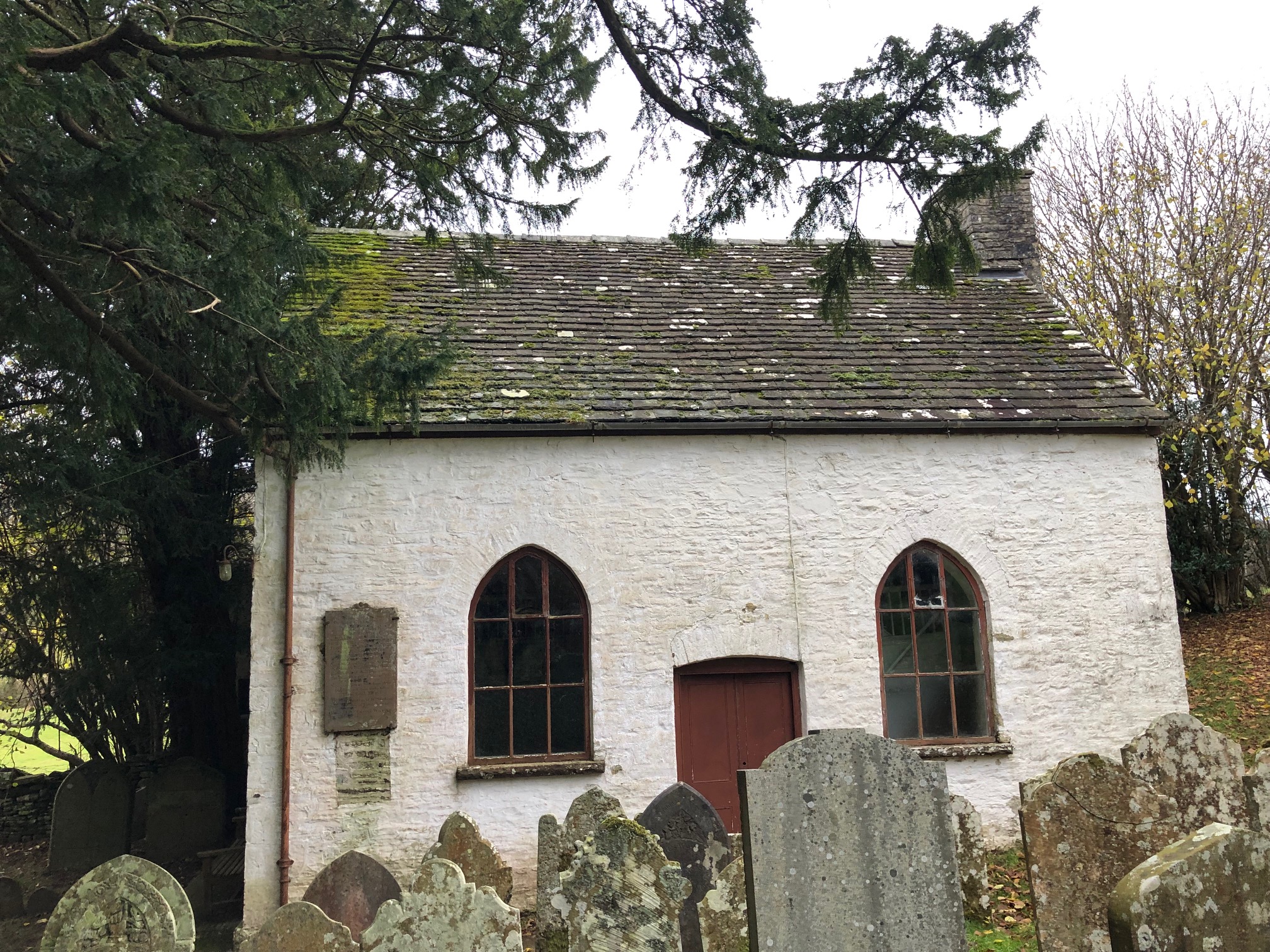There were two other people, a man and his wife from Caerffili, at St Mary’s church when I visited Capel-y-ffin last week. They stood and shared my wonder at the wonky beauty of the tiny building, with its wooden bellcote, eighteenth-century pews and pulpit, and miniature staircase and gallery. As we left, we took photos of one another in front of the porch. Then the man pointed out something that I’d failed to notice on previous visits: that there was another ‘capel’ here, hidden from sight but less than 100 metres away.

St Mary’s church is called a ‘capel’ because it wasn’t the centre of a parish, but a chapel-of-ease to the church in Llanigon, to the north near the Wye. Llanigon was where, in September 1871, the diarist Francis Kilvert was heartbroken by the vicar’s refusal of his request to marry Daisy, his daughter. Kilvert had visited Capel-y-ffin the year before, and found the church ‘squatting like a stout grey owl among its seven great black yews’ (all seven yews survive today).
The second ‘chapel’ is a nonconformist place of worship, constructed by a group of local Baptists in 1762 – the very same year that St Mary’s was built, to replace an earlier building. The Baptists too may have adapted an earlier building, since it includes a chimney at the east end. To find it you pass through a metal gate, walk down a lane beside the churchyard yews, and cross a simple bridge over the river Honddu. And there it is, a simple white rectangular building, just like the church, built of stone rubble and whitewashed, with a stone slated roof. Whereas the church, small though it is, stands proud and clear to the traveller coming up the valley, the chapel sits shyly down by the river and at first shows only its gable end, half hidden by a large tree. Walk round the front and you pass the graveyard, guarded with more ancient yews, judged to be over 300 years old. The façade has two windows with pointed arches, and a brown-painted door between them.

Joshua Thomas, an eighteenth-century minister and historian of the local Baptists, wrote that the new building was ‘in a very convenient situation, a road to it, and an agreeable place in a brook to be baptised, without incommoding any neighbours’.
By the left-hand window is a stone plaque. It records that William and David Prosser ‘brought the ministry of the gospel to their house in the year 1737, and secured this place for that sacred use for the time being.’ Joshua Andrews was the minister at this time (he died in 1793). It seems there had been another group of Baptists in the Olchon valley from as early is 1633, but both groups worshipped in private houses until the Capel-y-ffin chapel was built, although a burial ground existed before the chapel. Welsh was the language of both communities, although the Olchon valley lies in England. By the time their chapel was built the Baptists were tolerated, but they must have faced tough times in the repressive period that followed the restoration of Charles II.

The register of the chapel is kept in the National Library of Wales, and Miriam Griffiths has used it and other sources to research the story of the Olchon and Capel-y-ffin Baptists. One of them was Dorothy Nicholls. She’d been an Anglican when she lived in Radnorshire, but joined the Baptists when she moved to Olchon, and was baptised, aged 48, at Capel-y-ffin in October 1801. Dried and warmed after the ducking, she would have made the strenuous walk back across Hatterall Ridge to her home, Olchon Court. She died in 1819 and was buried at Capel-y-ffin; Miriam wonders whether her coffin was carried over the mountain. Certainly, the path over Hatterall Ridge was well trodden by the Baptists until at least the 1870s.
In 1800, according to the register, there were 52 members of the chapel. ‘There is seventeen of the above named … either too far off and can’t attend, or neglygent and do not, all of them poor, except Jane Gilbert who is prevented, as she says, by her husband.’
Occasionally some of the Baptists fell short of the strict standards of behaviour expected of them. On 4th May 1793 it was agreed ‘that James Williams to be excluded for drunkenness and other crimes laid to his charge; Anne his wife to be suspended for false speaking with other things unbecoming the gospel; and Mary Burton for injuring her fellow members and other crimes. To be done at the Lord’s Table, which was performed the Sabbath following’.

The register sometimes gives a flavour of the spiritual life and poetic language of the Baptists: ‘Our brethren enjoyed great liberty in speaking and the doctrine was dropping like rain’ (1838), and ‘When the net was drawn up, we found that some had been caught, and drawn (we hope) from their old element to breath in the air of Calvary’ (1842).
Photos show the interior of the chapel, with a gallery along the north and east walls supported on iron pillars (another parallel with St Mary’s). But all that’s invisible to the casual visitor: the door has long been locked. Are there still Baptists in the upper Honddu valley? Or have they all ‘gone under the hill’, in T.S. Eliot’s phrase, asleep in the yew-shaded graveyard of the chapel? Whatever the truth, their building deserves to be treasured and maintained.


Leave a Reply